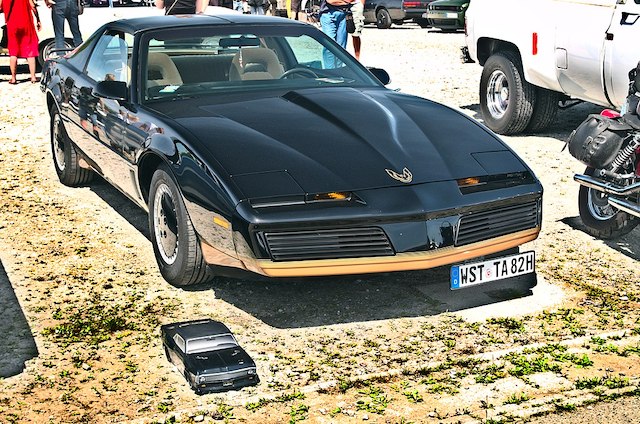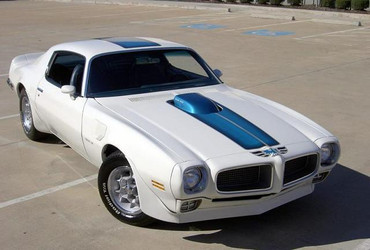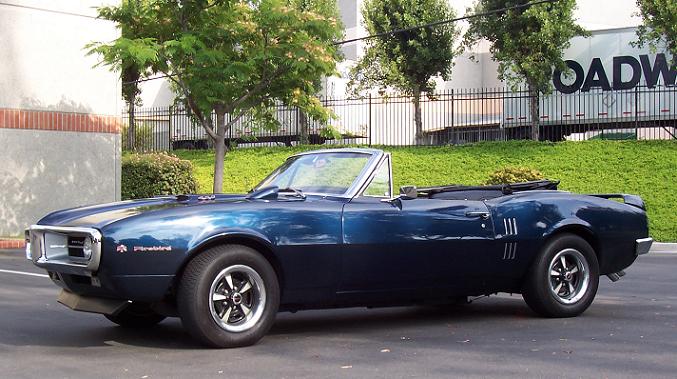Hottest Firebirds of the 1970s
Posted by Dale Edward Johnson on Apr 18th 2023
Pontiac’s weapon to take on the Ford Mustang was the Firebird. It was Pontiac’s version of the Chevrolet Camaro and was introduced in February 1967.
The hottest Firebirds came out in the 1970s, with the introduction of an entirely new body style in February 1970. Convertibles were dropped, a fastback was the only body style, and the side rear windows were eliminated. This body style would last until the end of the 1981 model year.
When introduced in 1970 there were four models: the basic Firebird; the luxurious Esprit; the sporty Firebird 400; and the high-performance Trans Am.
There was a wide range of engine choices. The base model came with a 250 cubic-inch six-cylinder engine producing 155 horsepower. Other options for Firebirds included a 350 V-8 producing 255 hp; a 400 V-8 producing 265 hp; a 400 V-8 with 330 hp; and a 400 V-8 with 345-hp. There were two Ram Air engines available on the Trans Am, both 400 cubic inches, with the Ram Air III version producing 335 hp and the Ram Air IV producing 345 hp.
The Firebird was praised by the motoring press, with Motor Trend magazine saying in February 1970, “It’s quite certain that Pontiac, if not already there, is hot on the trail of that elusive combination of style, flare, performance, practicality and individuality that the young-thinking automotive public would really like to have.”
Perhaps Pontiac wanted to live up to its muscle car image, after offering the GTO in 1964, which is often considered the first muscle car. The Firebird provided Pontiac with another high-performance car, although it was slightly smaller than the GTO, which was based on the intermediate LeMans series. The GTO sat on a 112-inch wheelbase and was 202.9 inches long, while the Firebird had a 108-inch wheelbase and was 191.6 inches long.
The new Firebird came out just as muscle cars were starting to fade in popularity. Consumers’ tastes were changing. Rising insurance rates, concerns about the environment, and worries about the economy prompted many to switch to smaller cars.
But in spite of these changing consumer preferences, Pontiac bucked the trend and offered more options on the Firebird – and it soon became the muscle car of the 1970s.
Pontiac offered a massive 455 cubic inch V-8 – 7.46 litres – in the Formula and the Trans Am models for 1971. But just 1,286 Trans Ams were sold for 1972.

Sicnag, CC BY 2.0 <https://creativecommons.org/licenses/by/2.0>, via Wikimedia Commons
With the muscle car segment struggling, GM even considered dropping the Firebird (and Camaro) after 1972. The main competitors were abandoning the muscle car segment. The process accelerated after the oil embargo, which began in late 1973, that saw the price of oil quadruple by early 1974. Suddenly, many consumers abandoned large cars with V-8s and switched to small 4-cylinder gas sippers.
The muscle car game of the late ’60s was changing quickly and dramatically. In 1974, Ford brought out the small Mustang II based on the subcompact Ford Pinto, while Mercury moved its Cougar upscale, sharing a body with the mid-sized Montego.
After 1974, Dodge dropped the original Challenger; Plymouth killed the Barracuda and American Motors eliminated the Javelin.
But Pontiac continued with the Firebird – despite much of the competition disappearing. The Firebird was the choice for those who wanted a sporty, high-performance car with a V-8.
Throughout the 1970s there were annual styling tweaks.
For 1974 there was a new sloping front end (replacing a flat front) and larger taillights.

In 1975 the rear window was enlarged, wrapping around the sides for improved visibility. This year also saw the Trans Am take over the top sales spot among Firebirds – and would stay there until 1983.
Introduced in 1976 were body-colored Endura front and rear bumpers. That also marked the final year for the 455 V-8; the biggest engine now was 400 cubic inches. And this was just the start of the trend towards smaller engines, as gas prices continued to increase.
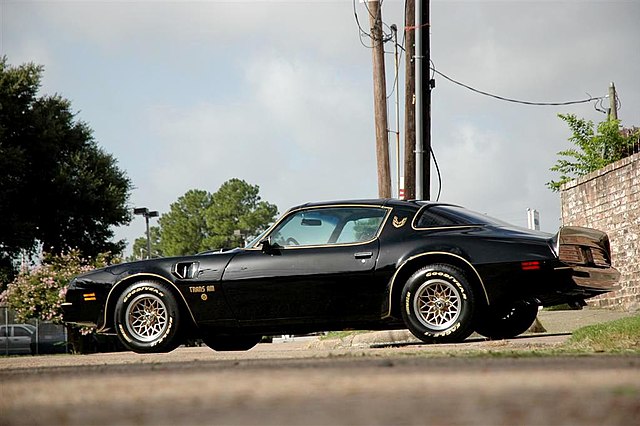
The front end was changed for 1977, with four rectangular headlights set into the edges of the mesh grill with the Pontiac logo splitting the grill. And a Firebird took on a starring role in the movie, Smokey and the Bandit, with Burt `Reynolds and Jerry Reed.
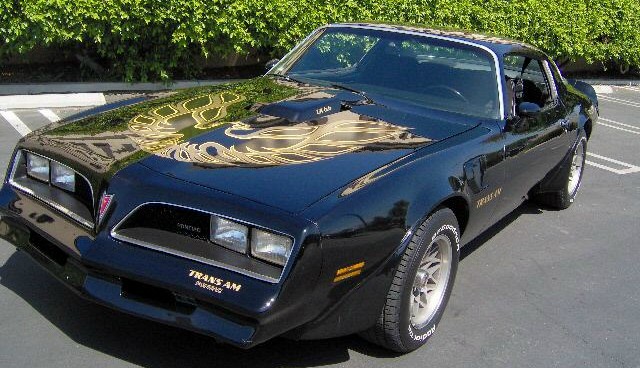
Another front-end change came in 1979, when the grill was moved below the bumper while the four separate rectangular headlights were above the grill. More than 100,000 Trans Ams were sold for the 1979 model year, making it the best year for Trans Am sales.
For 1980, the biggest engine available in the Trans Am was a 305-cid V-8.
The year 1981 marked the final year for the Firebird body that had been introduced in 1970.
Then in 1982 a new, smaller version came out. For the first time, the base Firebird was offered with a four-cylinder engine – something that would have been unimaginable during the 1970s, when the Firebird, led by the Trans Am, was the hottest muscle car on the market.
